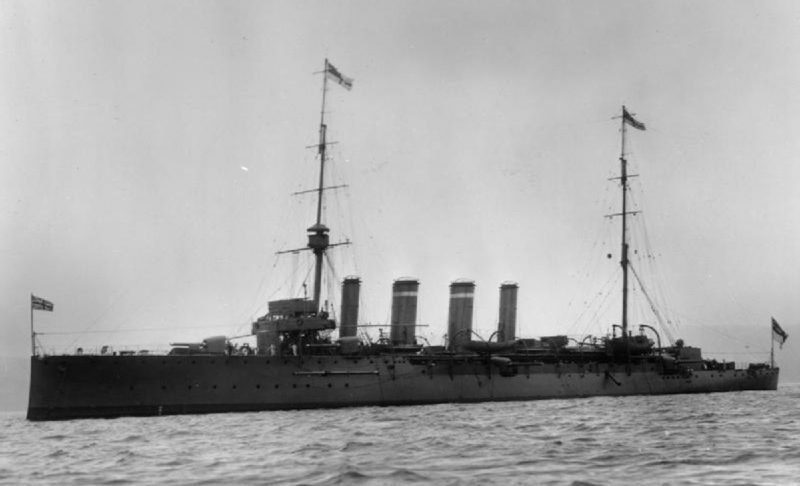The Royal Navy’s HMS Falmouth was a warship during World War I. German U-boats sunk it off the coast of Yorkshire 100 years ago on August 20, 1916. Tragically, twelve crew members were killed when the boat went down.
A survey of the wreck was recently completed by Historic England, who used that survey to create a 3D model of it.
The Maritime and Coastguard Agency assisted with the survey. The results were combined with a 3D image of a builder’s model of the ship, which is part the Imperial War Museum collection at Chatham Historic Dockyard.
The HMS Falmouth was the flagship of the Third Light Cruiser Squadron at the Battle of Jutland, the biggest naval engagement of WWI.
Over 100,000 sailors on 250 ships were involved. The Falmouth fought as part of Vice-Admiral Beatty’s battlecruiser fleet. She engaged several German light cruisers and torpedoed the battlecruiser Lützow.
Just a few weeks after Jutland, the Falmouth sank in Bridlington Bay. It had been hit by two torpedoes from U-boats.
Wayne Cocroft, Senior Investigator at Historic England, said, “Throughout the First World War the sea off our coast was an intensely-fought battlefield with many casualties lost within sight of the shore. Aside from war memorials to those lost at sea, the traces of maritime battles are invisible to all but a few.”
He goes on to add that modern technology can now be used to make this “underwater heritage” accessible to everyone. The use of computer visualization and 3D modeling can accurately recreate the appearance of lost vessels, “aiding our understanding and remembrance of this largely forgotten conflict.”
Historic England also announced special protection has been awarded to a wreck of a WWI minesweeper. This was done to stop the wreck from being stripped by divers.
The Arfon, built in 1908, was based out of the Portland Harbour Naval Base in WWI. It worked sweeping mines placed by German U-boats along the shipping lanes off the Dorset coast. In April 1917, it hit a German mine and sank, killing ten of the thirteen crew aboard.
Most of the of the wrecks off the coast of England from WWI have been salvaged for their fixtures and fittings.
What makes the Arfon unique is that it remained untouched for 100 years until the first dive occurred in 2014. It is vulnerable to souvenir hunters and illegal salvage.
Joe Flatman is the Head of Listing Programmes at Historic England. He said, “The Arfon shipwreck is a rare survivor of a type of vessel once very common around the coastline of Britain, but which has now entirely disappeared, surviving only in documents and as wrecks like this one.”
Coastal patrol vessels, such as trawlers and minesweepers, played a vital role both WWI and WWII, working with the larger ships of the Royal Navy to control and keep safe the shipping lanes of the British Isles.
Martin and Bryan Jones run a family dive charter company. They are the original discoverers of the wreck of the Arfon and are now working to preserve the site. Martin expressed his delight at working with Historic England on the Afron, and added that a commemoration to mark the ship’s sinking was planned for April.
The 3D model can be viewed online at www.historicengland.org.uk. A new leaflet titled The Wreck of HMS Falmouth is also available for download.
